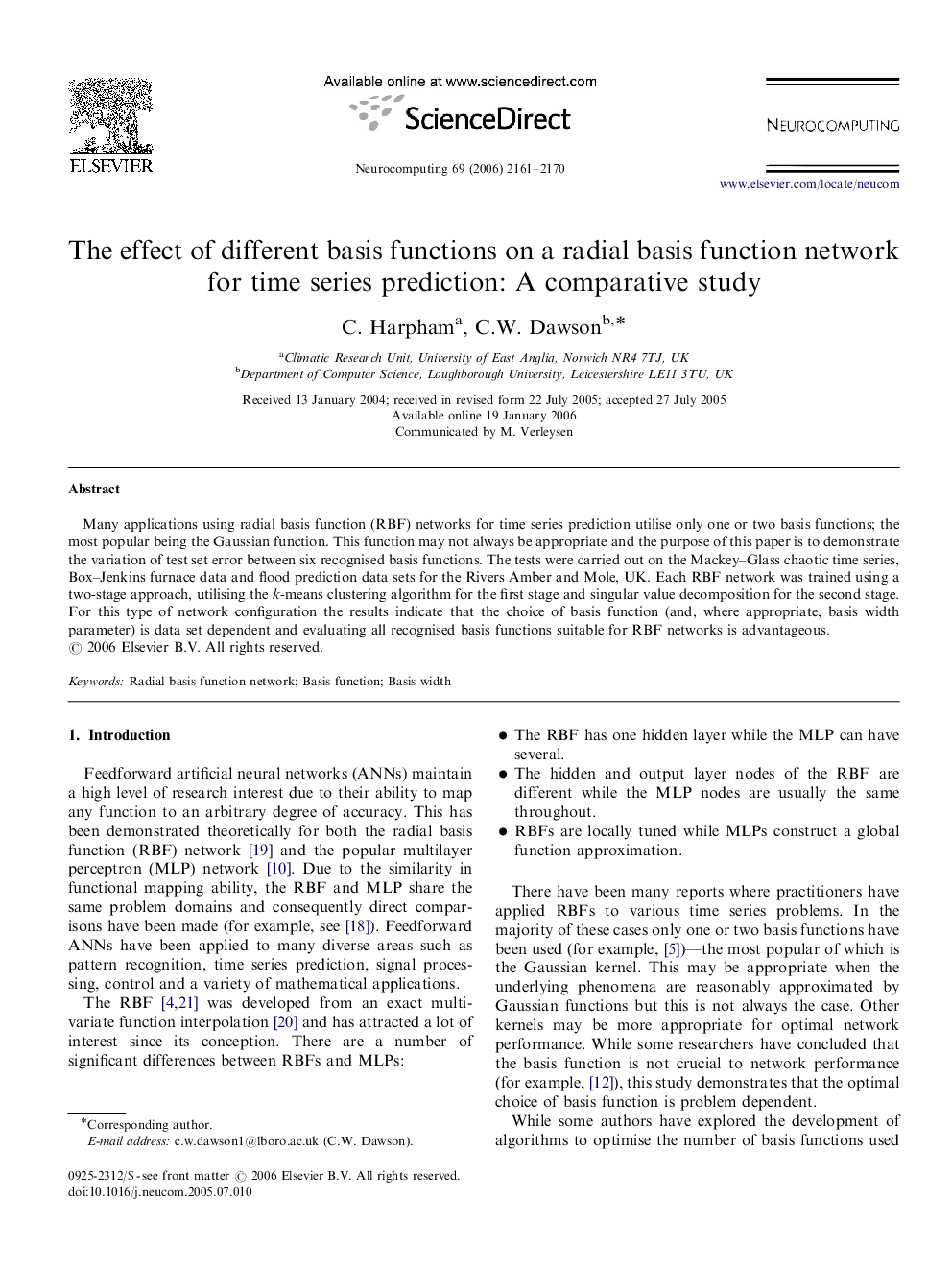| Article ID | Journal | Published Year | Pages | File Type |
|---|---|---|---|---|
| 410993 | Neurocomputing | 2006 | 10 Pages |
Many applications using radial basis function (RBF) networks for time series prediction utilise only one or two basis functions; the most popular being the Gaussian function. This function may not always be appropriate and the purpose of this paper is to demonstrate the variation of test set error between six recognised basis functions. The tests were carried out on the Mackey–Glass chaotic time series, Box–Jenkins furnace data and flood prediction data sets for the Rivers Amber and Mole, UK. Each RBF network was trained using a two-stage approach, utilising the k-means clustering algorithm for the first stage and singular value decomposition for the second stage. For this type of network configuration the results indicate that the choice of basis function (and, where appropriate, basis width parameter) is data set dependent and evaluating all recognised basis functions suitable for RBF networks is advantageous.
